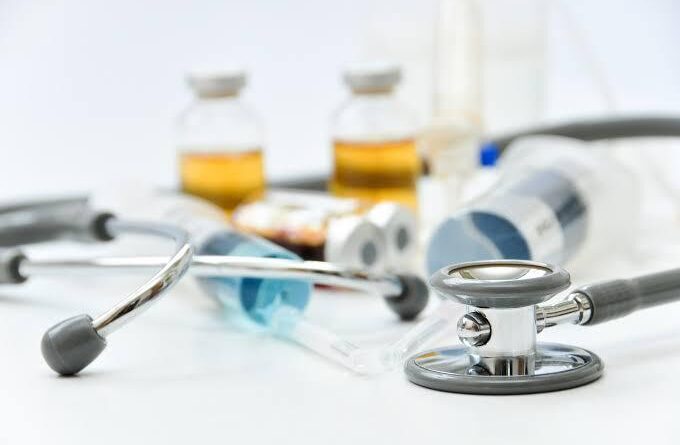Benefits of Medical Grade Plastic in the Healthcare Industry
Surgical tools, drug delivery instruments, and other aspects of healthcare greatly benefit from using medical-grade plastic. This type of plastic helps to create effective and safe medical devices. These devices that were previously of ceramic, glass, and steel are now being made of this cost-effective and durable material.
If you just wondered to yourself “what is medical grade plastic?”, then let’s quickly explain.
Medical grade plastic is a polymer made under the supervision of a physician. This healthcare practitioner will regulate and supervise the materials used in the production of the equipment. The end-product is a material that can be easily sterilized and resistant to various factors.
The goal of healthcare research is to improve the lives of both patients and workers. This is why there are task-solving schemes put in place to achieve generally improved health care solutions. This type of plastics is an example of innovations under the improved health care solutions.
Unlike before, there are more patient treatment methods that allow the use of this class of plastic. In the future, there is bound to be more development of this new product that will benefit countless patients. To understand the benefits of this plastic better, let us discuss the advantages they offer to health care.
Advantages of Medical Grade Plastics to Healthcare
The following are advantages of this polymer to healthcare:
Versatility
It has a lot of application in medicine. Equipment like inhalation masks to IV tubes have shifted to this polymer in recent years. Today, it is used in making internal implants such as catheters and joint replacement, and in producing pill casings. A lot of materials you see when you visit a modern hospital today are made of this polymer.
Flexibility
It is made from resins and these resins are flexible and easily moldable. Common polymers that are of this acceptable grade include polycarbonate, polyvinyl chloride, polyurethane, and polyethylene.
Latest technologies like injection molding allow complex designs and produce a polymer with metal-like strength and endurance. This molding process also adds ergonomic features like easy grip and less vibration of end-products.
Ease of Sterilization
Some medical equipment is made for one-time use, especially surgical tools. These devices help to curb the spread of dangerous infections as they are quickly disposed of after use. However, this material has antimicrobial surfaces. These surfaces are very effective in killing and repelling dangerous bacteria, even when they are not regularly sterilized. For more information on how easy it is to sterilize these devices, check here: https://www.wikihow.com/Sterilize-Medical-Instruments
Improved Safety
Patients whose bodies may react negatively to the use of traditional hospital equipment have few worries when they use hypoallergenic plastic equipment. There is a reduction in pain, discomfort, agitation of the immune system, and skin irritation. This plastic is non-permeable and shatterproof, making it a safe solution for moving bio-hazardous materials and curbing deadly pathogens. It also comes with a tamper-proof cap that reduces foul play in patient’s medical prescriptions.
Improved Ergonomics
They are lighter than metal, thus equipment made with them are quite lightweight. Having this reduced weight improves the comfort of surgical tools and reduces fatigue during surgeries. They come in different colors, textures, and surface finishes which improves user-friendliness.
Improve Life
Plastics that meet the medical requirement have helped to make the lives of amputees better. These patients can receive durable and lightweight prosthetics. Medical plastics are hypoallergenic, so patients that are allergic to traditional materials have a low risk of reaction when they use these plastics.
Longer Life Span
Unlike other traditional medical materials, medically accepted plastics have a longer lifespan. They are highly resistant to chemical, physical, and environmental factors, so they last longer.
Easy to Recycle
These plastics are environmentally friendly. As a healthcare practitioner, you will benefit greatly when you use equipment that meet the right specifications. It makes it easy for you to meet the demanding medical applications and remain environmentally friendly.
Cost-Efficient
They are more affordable than other materials. This is because the production cost for plastic parts is relatively cheaper than other materials. Glass, latex, and metal are prone to shattering and corroding, but plastic is not. It is more economical to store this polymer for a long time than other materials.
Also, these plastics are so durable that the odds of them being damaged during shipping and transportation are zero. This further reduces the cost of redundant expenses.
Potential for Future Innovations
There is ongoing research regarding other uses of medical plastics. 3D polymer printing has made it easy to create comfortable and cheaper prosthetics for amputees. Injectable plastic that can reduce severe bleeding is currently being developed by researchers. The potential for this plastic in healthcare is endless. For more information on future innovations, read this article.
Conclusion
Medical grade plastics are becoming increasingly popular in the health care industry. This innovation has many improved medical applications. By employing the use of medical plastic in your healthcare organization, you improve the lives of your patients and workers.





